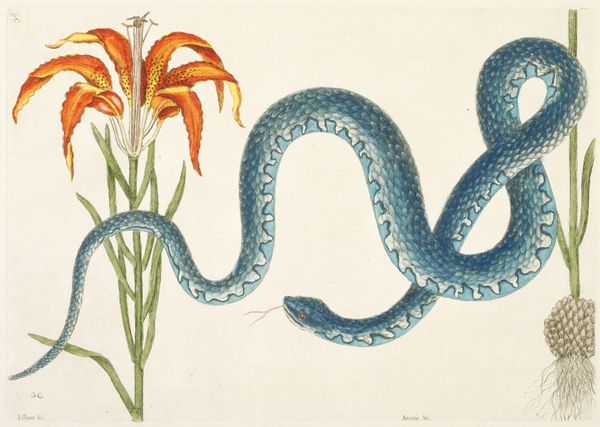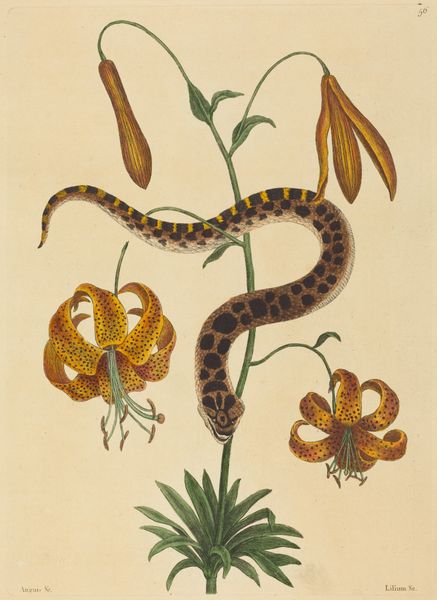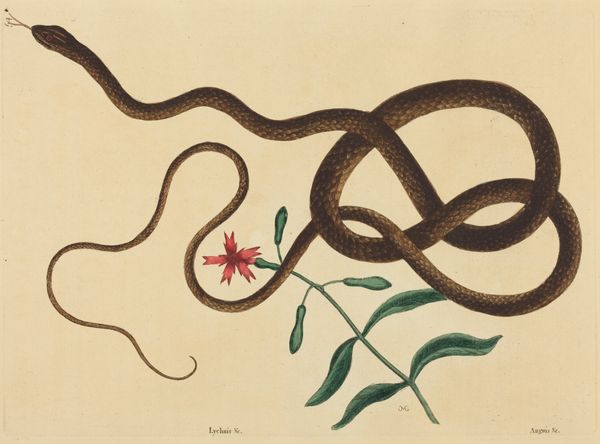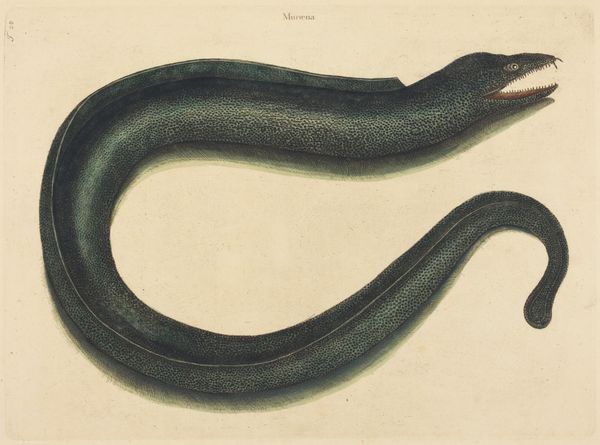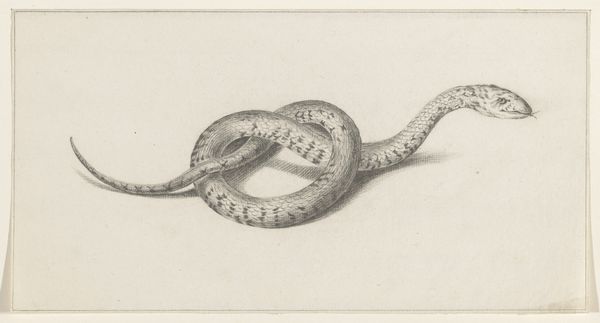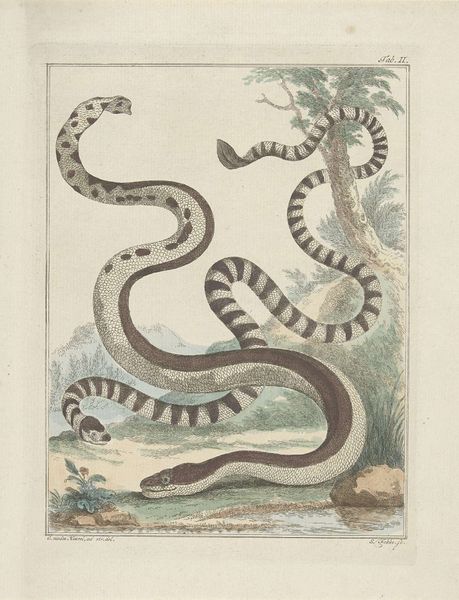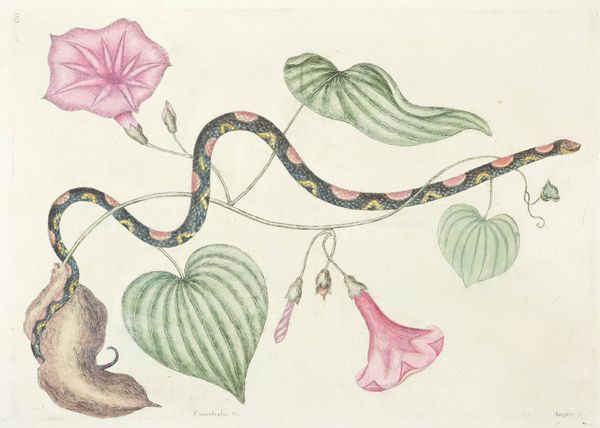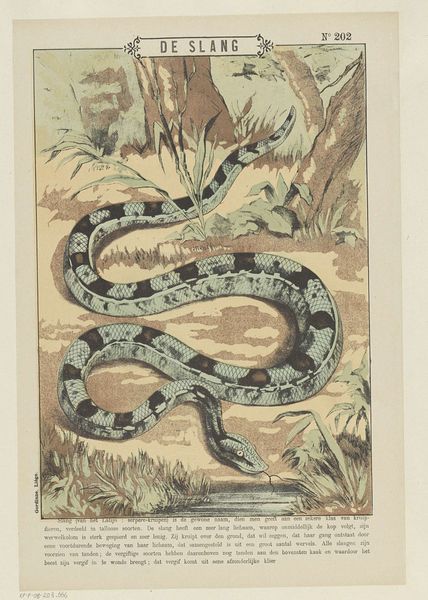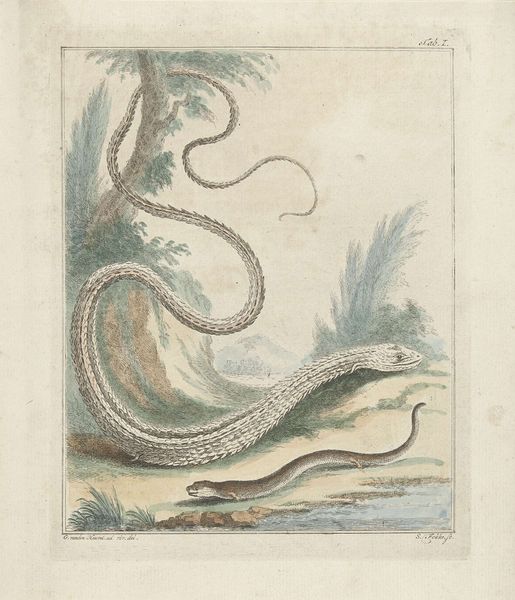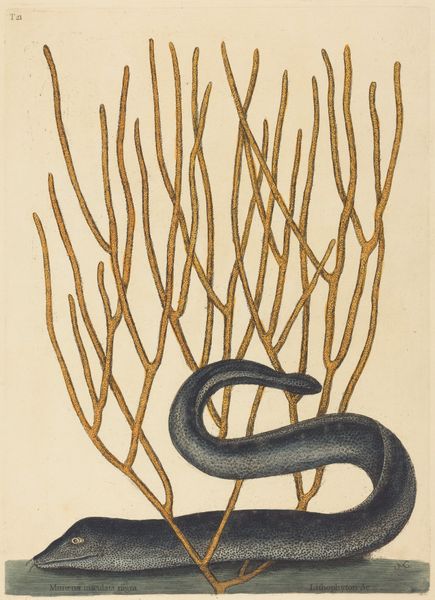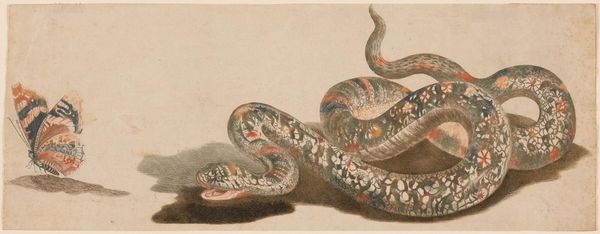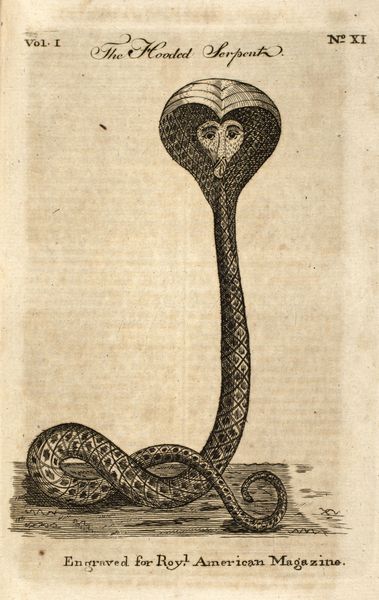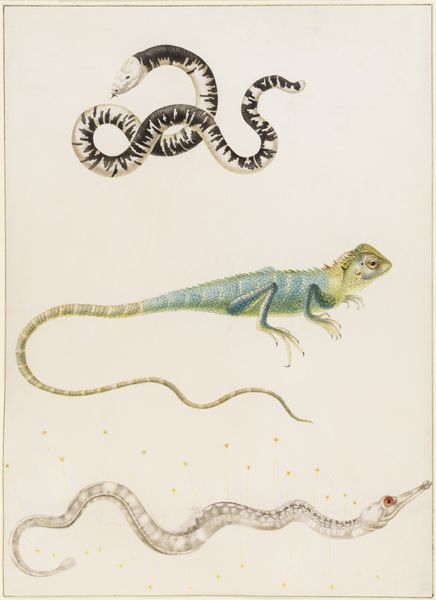
drawing, print, watercolor
#
drawing
#
toned paper
# print
#
watercolor
#
ceramic
#
watercolour illustration
#
academic-art
#
naturalism
Dimensions: plate: 24.9 x 34.4 cm (9 13/16 x 13 9/16 in.) sheet: 37 x 53.8 cm (14 9/16 x 21 3/16 in.)
Copyright: National Gallery of Art: CC0 1.0
Curator: Mark Catesby's "The Glass Snake (Anguis ventralis)", possibly from the period 1731 to 1743, presents us with a delicate watercolour illustration combining zoological study with botanical accuracy. Editor: It strikes me immediately as so precise, yet almost dreamlike in its stillness. The tones are incredibly soft. You can almost feel the smooth scales of the snake contrasting with the almost brittle flower. Curator: Absolutely. Catesby’s meticulous approach, rooted in naturalist observation, speaks to the Enlightenment’s growing fascination with the New World and its flora and fauna. The rendering of the snake and the flower exists not simply as representation but contributes to cataloging, controlling, even laying claim. Editor: What is quite compelling to me is thinking about the material process; the handmade paper, the specific pigments chosen for watercolour. And how they were sourced, traded perhaps—bringing these distinct parts into assembly within a globalised exchange. Curator: Catesby's naturalism highlights prevailing attitudes to knowledge. What appears at first glance as faithful objective depiction then becomes inevitably entangled with colonialist ambitions and power. Editor: The delicate handling also reminds us of the human labour involved. Not just Catesby's, of course, but potentially that of the artisans creating the very pigments that constitute its visual language. Who mixed the paints, who made the paper? These questions seem just as vital to understanding what we're really seeing. Curator: In many ways, art then, or even this sort of scientific observation, always functions within a system, one inevitably charged with identity politics. Editor: And what of its consumption? Who gets access, then and now, to this very image, this little token of imperial endeavor and ecological study. Curator: Thinking about the legacies and enduring impact of images like these are valuable, even troubling at times. The layering, always. Editor: It offers such depth if we attend to what and *how* it embodies as much as represents, beyond scientific specimen or natural curiosity.
Comments
No comments
Be the first to comment and join the conversation on the ultimate creative platform.
